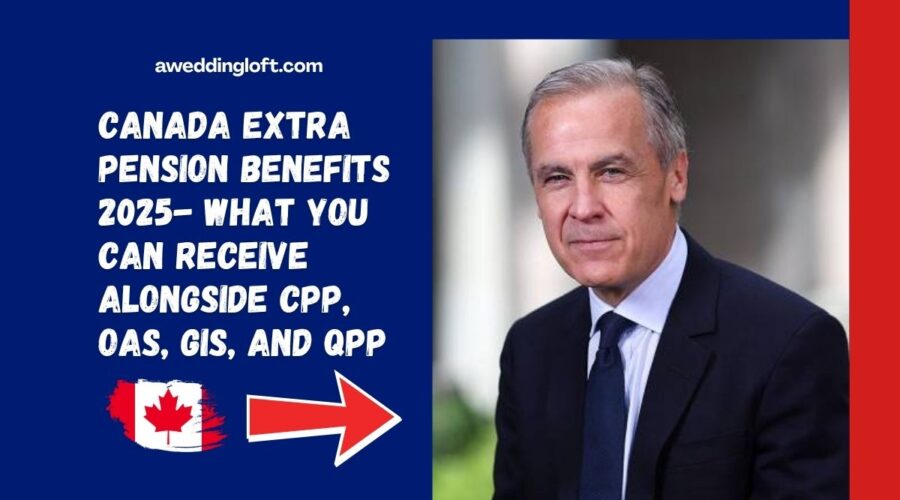Canada Extra Pension Benefits 2025- What You Can Receive Alongside CPP, OAS, GIS, and QPP
Planning for retirement in Canada is more essential than ever, and 2025 brings important updates to the country’s pension programs.
Canadians now benefit from enhancements to the Canada Pension Plan (CPP) and other supplemental supports such as Old Age Security (OAS), Guaranteed Income Supplement (GIS), and the Quebec Pension Plan (QPP).
This guide outlines the latest improvements and what you can expect to receive in retirement if you qualify under these evolving programs.
Canada Additional Pension 2025: Key Updates
The Canada Pension Plan (CPP) is a contributory benefit based on your work history and total earnings. In 2025, a new threshold has been added to increase benefits for higher earners.
- The Year’s Maximum Pensionable Earnings (YMPE) is set at $68,500.
- A new tier, the Year’s Additional Maximum Pensionable Earnings (YAMPE), is introduced at $73,200.
Earnings between $68,500 and $73,200 are now eligible for additional CPP contributions, enabling participants to build a larger retirement fund.
At age 65 in 2025, the maximum monthly CPP benefit is $1,364.60, depending on how much you contributed and when you begin drawing your pension.
What Else Can You Get with CPP in 2025?
In addition to the CPP, Canadian retirees may be eligible for the following benefits:
Old Age Security (OAS)
- Available to those 65 years and older who meet residency requirements (minimum 10 years in Canada).
- Not based on employment or contribution history.
- The maximum monthly OAS benefit for 2025 is approximately $628.
Guaranteed Income Supplement (GIS)
- A non-taxable benefit for low-income seniors already receiving OAS.
- The amount varies depending on marital status and household income.
- Designed to ensure all seniors have a minimum level of income.
Quebec Pension Plan (QPP)
- Administered separately for residents of Quebec.
- Functions similarly to CPP but with its own contribution rates and benefit calculations.
Combined Retirement Income in 2025
Here’s how all these benefits can work together to support various retirees:
| Retirement Profile | Estimated Monthly Income | Included Benefits |
|---|---|---|
| Single Retiree, Average Earner | Up to $2,600 | CPP + OAS + GIS (if eligible) |
| Higher Income Earner | Over $1,364.60+ | Increased CPP due to contributions over YMPE |
| Low-Income Retiree | GIS + OAS top-up | Ensures basic income level is met |
Why This Matters: Building a Secure Retirement
The 2025 enhancements to CPP, particularly the introduction of YAMPE, are designed to help Canadians, especially higher-income workers, accumulate greater retirement wealth.
Meanwhile, programs like OAS and GIS continue to support low-income seniors, ensuring that all retirees maintain a reasonable quality of life.
In combination, these pension programs form a strong foundation for retirement income planning. However, many Canadians also rely on private savings, RRSPs, and employer pensions to supplement government benefits.
The Canada Additional Pension enhancements for 2025 significantly improve retirement readiness for Canadian seniors. By understanding how CPP, OAS, GIS, and QPP work together, retirees can better prepare for financial stability in their later years.
With the added contribution tier and rising benefit caps, now is the time to assess your retirement strategy and maximize your entitlements.
FAQs
What is the new earnings threshold for additional CPP contributions in 2025?
The Year’s Additional Maximum Pensionable Earnings (YAMPE) has been set at $73,200, creating a second tier for contributions above the YMPE of $68,500.
Can I receive both CPP and QPP benefits?
No. If you’ve worked in both Quebec and other provinces, your benefits are coordinated between CPP and QPP, but you receive only one combined pension based on your contribution history.
How does GIS eligibility work in 2025?
To qualify for the Guaranteed Income Supplement, you must receive OAS and meet the income requirements based on your marital status. The payment varies depending on your total income.

Leave a Reply Cancel reply